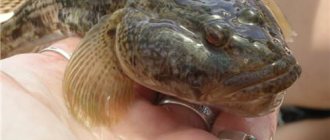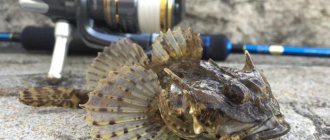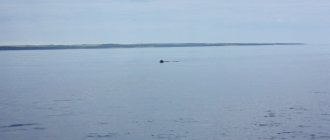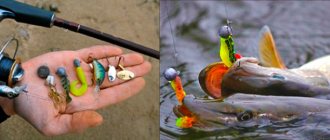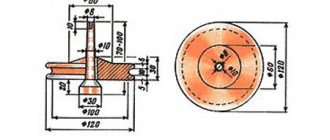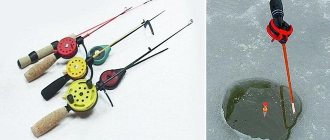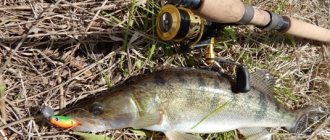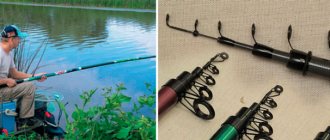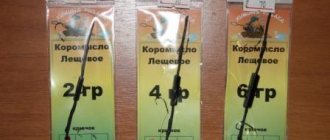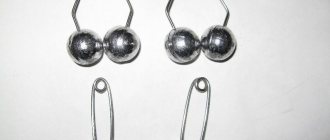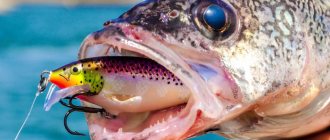If you are interested in fishing in the Sea of Azov from the shore, then you can be sure of an excellent bite and a great rest.
The Sea of Azov is rightfully considered the most beautiful place on the border of Ukraine and Russia. Its coastline is replete with spits and bays. The largest of them is Taganrog. Next come the Berdyansk Bay, Obitochny on the northern shore; Arabatsky, Kazantipsky, Temryuksky, Yasensky in the southern part of the sea.
In the west, the Biryuchiy Island spit and the Arabat Spit form the Utlyuk Estuary and the Sivash Bay. The Sea of Azov is the shallowest sea basin in the world. Its greatest depth is 14 meters. Due to the fact that frequent collapses of the coastline occur mainly in the autumn-winter period and early spring, as well as as a result of river sediments, about 14 million tons of solids accumulate in the sea, which contributes to gradual shallowing.
Climatic conditions of Azov
The climate of the Azov Sea is similar to the climate of the Black Sea lowland. The air temperature in summer averages 28 - 35 degrees Celsius, which contributes to a favorable holiday for tourists. In winter, the temperature drops to -5, and in rare cases to -10 degrees. In summer, Azov waters warm up to +30 degrees; Therefore, the holiday season here lasts from May to October. In winter, the sea is covered with ice, which facilitates winter fishing.
[custom_ads_shortcode1]
Fishing on the Sea of Azov
The Azov Sea is rich in flora, a lot of red and green algae, and, as a result, the proliferation of many commercial fish. Pike perch, sturgeon, flounder, stellate sturgeon, and herring are found here. Of the smaller ones, sprat, anchovy, goby, and ram are caught. But I would like to talk today about mullet fishing. This species feels great both in salt water of the sea and in freshwater rivers, so it is best to look for it in coastal areas, which makes the presence of a boat unnecessary. Having found a school of mullet and fed it, you can stay in one place for a long time. But at the same time, one must take into account the fact that mullet usually stands on the current that runs along the shore. It is best to look for flocks in sandy areas.
Mullet usually spawns in the saltier waters of estuaries, in bays and bays, usually 1.5-2 km from the shore of the Sea of Azov. In the early morning, mullet are best caught using bottom tackle or float rods. Considering the fact that the mullet is very wary, fishermen must hide so that it does not see them. For fishing, very thin tackle is used with a light float and small hooks, which are attached at a distance of 15-20 cm above the load. This is explained by the fact that it does not bite from the bottom, and the hooks need to be in the water column.
You can also catch mullet with a spinning rod equipped with a white spinner.
As with many other species, when fishing for mullet it is necessary to use complementary foods. This is where the fisherman’s imagination can be given free rein: anything is suitable for complementary feeding, from crushed goby or mussels to the leftovers of one’s own lunch, right down to bread crumbs. Here the mullet is not picky.
The same applies to attachments: they are used as bread crumb, sliced fresh fish, shrimp meat, etc.
Mullet bites are less energetic than most, so it is best to fish while holding the line with your hand, then you can always react and hook in time. You need to hook very carefully, not too hard, so as not to tear the hook out of the mouth. The catch must be pulled out of the water quickly, but without noise, so as not to frighten the entire flock.
A fisherman sees a fisherman from afar, says the saying. If the sight of a person with a fishing rod in his hands makes you want to get up from the sun lounger and concentrate on the twitching of the float, then this material has come to the right place, and overview information about fishing in the Sea of Azov , and in particular in Kirillovka can be a good help in fishing.
Fishing in Kirillovka. ©E. Timofeychuk.
What kind of fish can you catch in Kirillovka, what gear is needed and in what month is it better to come to the resort to get satisfaction from the process and the result? We tried to collect answers to these and other questions in this article.
[custom_ads_shortcode2]
Types of fishing on the Sea of Azov
The most popular types of fishing in the Azov waters are:
- bottom fishing or fishing from an inflatable floating device;
- surf or shore fishing;
- trolling (fishing using heavy-duty gear).
Let's look at each type of fishing in more detail:
- Bottom fishing. There are many people who like to fish from a boat on the Sea of Azov. This type of fishing has become very popular not only among local residents, but also among vacationers. This method of fishing allows the fisherman to return with a larger catch.
- Surf fishing. The greatest prevalence of this type of fishing is due to the lack of swimming equipment among fishermen. But this fact does not at all upset lovers of small fish species, of which there are a huge number on the coast.
- Trolling. This type of fishing allows you to take more gear with you and fish on the move (a motor is installed on the boat). With this method, you can boast of heavier prey than with bottom fishing.
Semi-anadromous fish species
Such fish, like migratory fish, spawn in rivers, but can stay there for a long time - for the winter or for up to a year. The young are also in no hurry to return to the sea and, as a rule, winter in fresh water. Semi-anadromous fish include such abundant fish as pike perch, bream, ram, and sabrefish. The previous part of the article is rather of a scientific, educational and theoretical nature. Pollution of sea water by emissions from chemical and metallurgical enterprises, the uncontrolled flow of pesticides from adjacent agricultural areas, intensive development of the coast and predatory bottom trawling in order to get the maximum from industrial fishing have already led to disruption of the Azov ecosystem and significantly reduced the fish population. Today, out of about 17 commercial fish that were caught in the Sea of Azov a decade ago, only three remain - sawngas, goby and anchovy. Naturally, the number of non-commercial fish has decreased significantly, so fishermen should hardly count on the fact that their prey will be sturgeon, sterlet or stellate sturgeon. Nevertheless, you can still go fishing with pleasure and benefit in the Sea of Azov.
[custom_ads_shortcode1]
Fishes of the Sea of Azov
Fishes of the Sea of Azov Fishes are represented by 79 forms. Of these, 20 forms are anadromous and semi-anadromous (sturgeon, herring, perch) and 13 are freshwater (cyprinids). Azov fish can be divided into the following 7 groups according to genesis, distribution and biology.
1 - stellate sturgeon; 2 - Aterinka; 3 - bream; 4 - pike perch; 5 - anchovy; 6 - percarine; 7 - sprat; 8 — ram; 9 - sturgeon. I. Mediterranean invaders:
1. Naturalized in the Sea of Azov and spending their entire lives here, for example, flounder - kalkan (Bothus torosus), some gobies.
2. Spending only part of the year in the Sea of Azov, and then leaving back to the Black or even the Marmara Sea (mullet, mullet, anchovy).
3. Irregularly entering the Sea of Azov (mackerel, tuna).
II. Autochthonous relics of the Pontic fauna (“Caspians”):
4. Not extending beyond the Sea of Azov (percarina - Percarina maeotica).
5. Passing forms (sturgeon and stellate sturgeon).
6. Spending part of their life in the Black Sea, part in the Azov Sea, and part in rivers (herring - Caspialosa pontica, bellyfish - C. tanaica, beluga - Huso huso).
III. Freshwater fish:
7.Semi-through and through.
Thus, in fish we see the same triple genesis of the fauna of the Azov Sea. On the other hand, it is of great interest that genetically heterogeneous groups of ichthyofauna formed unified biological groups (marine, anadromous, semi-anadromous, and even completely freshwater).
As a result of quantitative accounting of fish in the Sea of Azov, it was possible to establish with some accuracy the stocks of commercial fish. Comparison of these stocks with the catch shows how high the development of fishing in this sea body of richest productivity is.
The high productive qualities of the Azov Sea in relation to plankton and benthos determine the exceptional qualities of this reservoir as a place for fattening fish not only from Azov, but partly from the Black Sea (herring, anchovy, red mullet, mullet, etc.).
Herring, sprat, anchovy and other pelagic fish feed on plankton, sturgeon and bream feed on benthos, gobies, perkarina puglov, and silverside also feed on benthos, and they themselves are used as food by the predator pike perch. Some fish, like mullet (Mugil cephalus) and mullet (Mugil auratus), feed primarily on detritus.
Fattening up in the Sea of Azov, the fish become very fat before winter.
Like the polar cod of the Arctic seas, the anchovy is a remarkable polyphagist, despite its small size, and eats everything that is around, from phytoplankton to benthos (worms and small mollusks) and even detritus.
In total, planktivorous fish eat at least 2 million tons of plankton in the Sea of Azov during the summer.
Benthic-eating fish of the Sea of Azov usually feed on mollusks, worms and crustaceans: gobies - mainly on worms and mollusks, bream, in addition, on crustaceans, sturgeon - on worms and mollusks; Stellate sturgeon, in addition, consumes large quantities of small crabs - brachinotus and gobies, etc.
17, total, today
Goby
This small fish, up to 40 cm long, from the ray-finned family, approaches the shore en masse in March, so the fishing season starts at the beginning of spring. Gobies spawn between March and August, when the sea water temperature exceeds +10°C +12°C. There are more than 10 species of gobies in the Sea of Azov, but fishermen most often come across the following:
Martovik , also known as “whip”, “toad”, is the largest goby, which can weigh up to 300-500 grams and have a length of about 35 centimeters, sometimes up to 50 centimeters. In addition to its weight, it is distinguished from other representatives of gobies by its characteristic brownish color with dark spots and wide gills, which serve to scare away predators.
Round timber , or “kutsak” is the most numerous representative of gobies. Its length rarely exceeds 25 centimeters, and its weight can reach 250 grams. The color of such fish can be from light gray to brown and even black, sometimes with a clearly defined pattern.
Golovach , otherwise known as “grandmother”, has an average length of 10-20 centimeters, weight – up to 200 grams. It can be distinguished from other gobies by a triangular black spot near the tail, a reddish-brown or grayish-brown color, and a lower jaw protruding in front of the upper jaw.
For catching gobies, float and bottom tackle with 2-3 hooks are best suited; you can use sliding sinkers. According to local fishermen, it is quite effective to catch a goby “on a stretch”, in which the tackle is thrown 20-30 meters, after which it is slowly reeled in, motivating the fish to swallow the “live” bait. From the shore or from a boat - in this case it doesn’t matter, of course, unless we are talking about the high season, when the water off the coast is literally “boiling” with vacationers.
If fishing from the shore is difficult, you can rent a boat. There are rental points for catamarans and boats both in the center of the village and on Fedotova Spit and Peresyp Spit. In some of them, tourists can be offered fishing gear, but their quality can be conditional, and even real fishermen always have spinning with them.
The goby is an almost omnivorous fish, so as bait you can use an estuary worm caught in the silt layer of the Utlyuk or Molochny estuaries, meat, shrimp, and even a previously caught goby, cut into small strips and strung on a hook with the scales inside.
[custom_ads_shortcode3]
Katran
The only representative of a large family of sharks, the katran is often called a sea dog. It does not grow more than 2 meters in length and feeds exclusively on fish, never attacking humans.
Wikimedia Commons/Rick Starr (CC BY 2.0)
The only danger that can come from it is the risk of being scratched by the sharp thorns on the back if a person tries to grab the katran with his bare hands. This fish does not approach the shore closer than 40-50 meters, since in the coastal zone the water contains too little salt.
Pilengas
He is also called pelingas, pelengas, belingas - a rather large fish from the mullet family, which lives only in sea water and can reach one and a half meters in length and about 7 kilograms in weight. In the Sea of Azov, sawfish appeared only in the second half of the twentieth century thanks to an experiment on the acclimatization of 2000 units of fish fry brought from Vladivostok and the not entirely legal initiative of G.G. Grout, who, by his own decision, released about a hundred juveniles into the Molochny Estuary. The fish successfully acclimatized and, as a result of natural spawning, not only replenished the ichthyofauna of the Azov Sea, but also became commercially available not only in the Azov Sea, but also in the Black Sea.
The best time to catch pelingas is from May to September, when the sea water temperature exceeds +10°C. In cold weather, fish go to rivers to spend the winter in pits. The most productive fishing can be during the day when schools come out to feed. It is better to go for pelingas with a spinning rod, the casting range of which reaches 100 meters, and the load is 100 grams. If the equipment is designed for two or three leashes with hooks, it is necessary to use a fishing line with a diameter of more than 0.35 mm. As a rule, pelingas are caught directly from the shore. To control the bite, a bright red float is suitable, which is clearly visible even in muddy water - if, after a sharp jerk and tug, the tackle moves to the side, you need to slightly loosen the line, immediately hook sharply and start landing the fish. Pilegnas can be cunning and cautious, quite often approaching the bait several times, and in case of danger it can simply jump over an obstacle.
In order to catch the “big fish”, and not the ever-hungry gobies scurrying along the bottom layer of water, experienced fishermen advise attaching foam floats with hooks to the fishing line, then all the hooks will be positioned vertically, and will not sink to the bottom and attract the sawfish.
Nereis worms, which can be dug up in the silt of the Molochny or Utlyuk estuary, are best suited as bait for sawfish. Pilengas is a finicky fish, so meat or a small goby will most likely be useless.
[custom_ads_shortcode1]
What kind of fish are there?
The Sea of Azov is famous for its rich fish stocks and good bite at any time of the year. Shallow depths contribute to rapid warming of water and intensive reproduction of various food items. The list of fish living in these waters is huge and includes more than 70 species. Ichthyologists distinguish 3 main groups, which include:
- checkpoints;
- semi-through;
- marine.
The most valuable are representatives of the sturgeon family. This group includes:
- beluga;
- sterlet;
- fisherman;
- sturgeon;
- stellate sturgeon.
Important! A fisherman who comes to these parts should remember that sturgeon fishing on the territory of the Russian Federation is strictly prohibited and provides for not only administrative, but also criminal penalties. If one of these species is hooked, it must be immediately released back.
The next group includes semi-anadromous fish such as bream, ram and pike perch. These rocks are more often found in the estuaries of rivers flowing into the sea and freshwater estuaries. The marine group includes the following fish species:
- bulls;
- flounder;
- sprat
These underwater inhabitants constantly live in salty sea water and can enter freshwater bodies only during spawning.
Fishing is responsible
Fishing cannot be done using any method and not at any time of the year. Every year in early April, a spawning ban on fishing in water bodies starts in Ukraine. This is necessary so that the rivers and seas, whose ecosystem is already balancing on the brink of life and death, do not become completely empty.
This does not mean that on vacation in Kirillovka tourists will not be able to meditate while staring at the float. These regulations regulate the fishing method and the maximum allowable amount of catch.
During the spawning ban you can:
- Fishing from the shore;
- Fish with one tackle equipped with one hook - fishing rod, donka, spinning rod;
- Fish exclusively within the boundaries of a populated area (except for natural spawning grounds and within wintering pits);
- To catch fish with a total weight of no more than 2.5 kilograms per one unregistered fisherman; bearers of a certificate from the Fisheries Society of Ukraine have the right to a catch of up to 5 kilograms.
According to local residents, the fishery inspectorate can accommodate tourists halfway and turn a blind eye to some violations, but in any case it is not worth relying on “the customer is always right.” Moreover, they may ask for a certain amount for catching fish over the limit.
Penalties for exceeding the maximum catch:
- Bull - from 34 hryvnia for 1 unit;
- Pilengas – from 820 hryvnia for 1 unit;
- Kalkan - from 850 hryvnia per unit.
[custom_ads_shortcode3]
Fishing with nets
The most popular method among local fish farmers. Fishing with a net is an illegal activity even outside the spawning ban, and even more so in the summer. Therefore, nets are usually installed in the dark, and the catch from them is also taken in the dark. Not only local residents, but also visiting “fishermen” fish in this way. If you're lucky, their movements in the water area can be tracked by broadcasts from web cameras in Kirillovka , which are installed almost along the entire coast.
[custom_ads_shortcode3]
Where to stay?
Don't know where to stay in Kirillovka to go fishing?
All recreation centers in Kirillovka >
Choose a recreation center, hotel or guest house at your discretion. The main thing is that he works in the off-season .
Fishing on the Azov Sea. Last year, while vacationing on the Sea of Azov, near Melitopol, I was going to catch pike perch from a boat with a spinning rod.
While still in Moscow, I bought silicone baits, wobblers, and prepared non-snagging foam rubber, but the preparations took a long time and, due to some misunderstanding, almost all the baits were left at home.
When I later looked into my backpack, I found one box with “Cheburashkas” of different weights and a five-centimeter balance weight weighing 10.5 g. The main fish in this area of the sea are several varieties of gobies, flounder, pike perch, sawngas and ram. Occasionally, Russian sturgeon is found. Having sailed about 300 meters from the shore, I tried to fish with a spoon.
Already on the fourth cast, a pleasant surprise awaited me in the form of a bite. There was a 100-gram bull on the balancer's hook. But, despite this, I have not lost optimism, rather the opposite.
Assuming that this fish was schooling, I decided to linger, and, as it turned out, it was not in vain! Within an hour I already had four dozen “big-faced ones”.
And although I never caught the desired pike perch, I quickly saw all the advantages of fishing with a balance beam. First of all, such fishing does not require bait, which is used by all local fishermen and the majority of vacationers. These are shrimp, pieces of small fish (ferina, sprat, goby) and nereis (sea worm), which is very unpleasant to catch while standing in the estuary mud (even though it is considered healing) - its habitat.
By the way, Nereis is the only bait for sawfish and the best for all fish living in the sea, including freshwater ones found in slightly salted water. It is mined in estuary mud with an ordinary shovel, more often at night and very early in the morning, so as not to waste precious time intended for fishing.
[custom_ads_shortcode3]
Fishing on the Sea of Azov
It is impossible to stock up on it for a long time, since this worm quickly deteriorates. The second advantage of the spoon is even more significant: the fish is caught larger - weighing 100-120 g, while my neighbors, bottom fishers, had it the size of a little finger, regardless of the hook number and type of bait. This led to the neighbors starting to move closer and closer to me, while they scraped the bottom with anchors.
The result is complete lack of bite. I had to move to another place; the exciting fishing continued there. Local fishermen on boats stayed in my previous place for a couple of days, apparently, they hoped that the fish would return to the bottom “plowed” with anchors. And the third advantage of the balancer: almost all sea inhabitants are, to a greater or lesser extent, predators, so you can catch almost any fish.
In addition to gobies, I managed to catch several flounder and even one small sturgeon, but according to the rules of sport and recreational fishing, this fish must be released, which is what I did. Since I had only one tackle at my disposal, I will try to describe it in more detail, although I do not at all claim that it is ideal. Information about lures for fishing in the fjords is in this article.
I equipped the winter fishing rod with fishing line with a diameter of 0.18 mm (the thinnest monofilament that was available). I didn’t have a nod, however, it didn’t cause any special problems, since all the bites turned out to be greedy and were clearly reflected in the hand. Perhaps in a strong wave it’s more difficult to “catch” the bottom without it, but in such weather it’s better not to go out to sea at all.
I don’t think that the nod can cause damage, rather the opposite, however, it should be made of anti-corrosion material, just like the balancer hooks. Some companies write the words “Salt Water” on the packaging with hooks: if you make such baits yourself, then it is better to use just such hooks.
[custom_ads_shortcode1]
How to behave to avoid being attacked by a shark in the Sea of Azov: tips
Although sharks in the Sea of Azov are, according to scientists, harmless, it is still better to take some precautions.
Behavior
- You should not swim too far, because the further into the open sea, the more likely it is to encounter a predator.
- Katrans are nocturnal, so it is better to avoid night swimming in the sea and, even more so, long swims.
- It is unlikely to step on a katran near the shore of the Sea of Azov, but it is still better to step carefully along the bottom to avoid a possible bite or injury from a poisonous thorn.
- Katrans generally prefer bottom layers; they rise to the surface mainly at night.
- The sensitivity of sharks , including katrans, to the smell of blood should serve as a warning to those who have bleeding wounds and women during their menstrual period against entering and swimming a significant distance from the shore.
